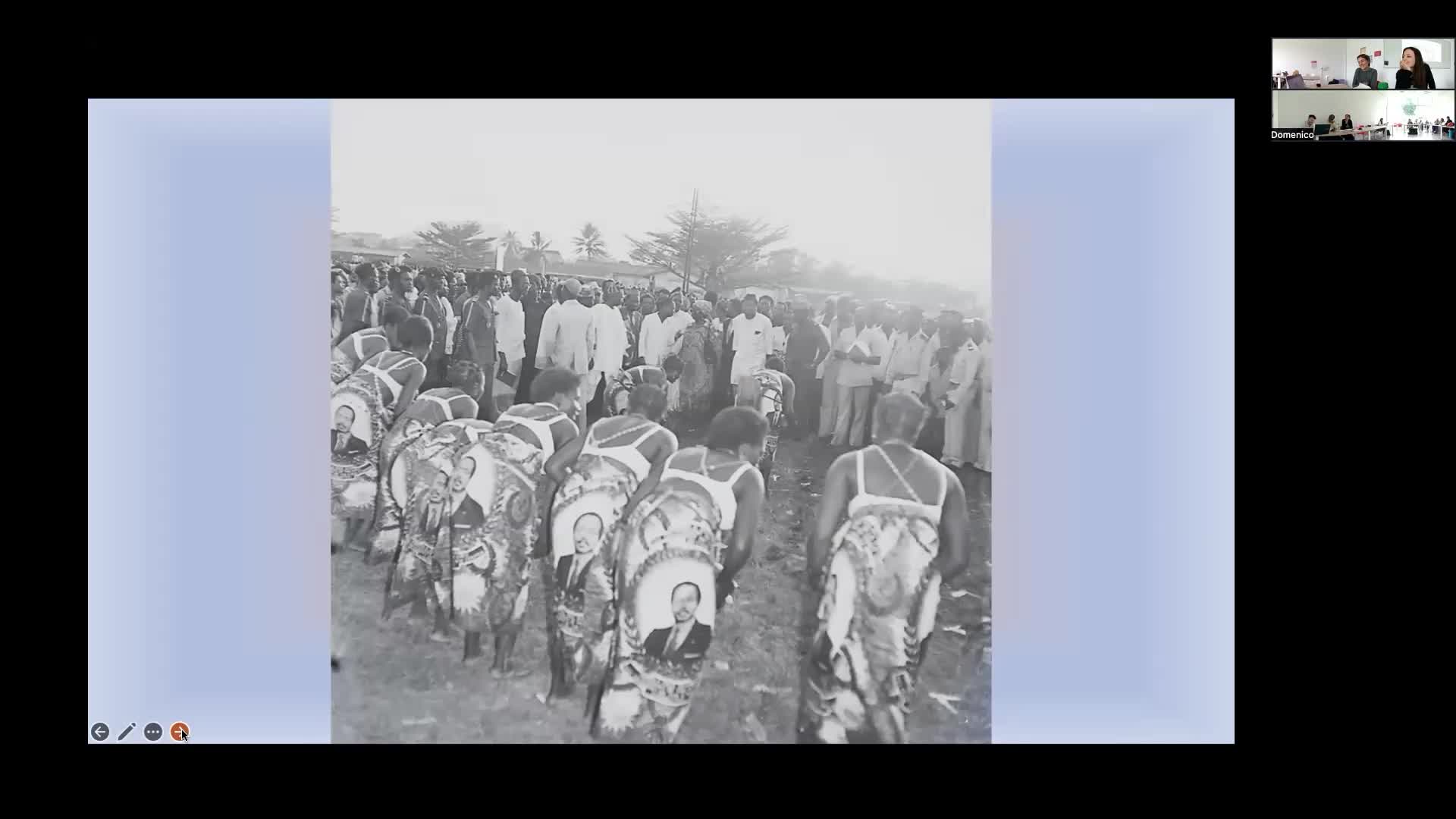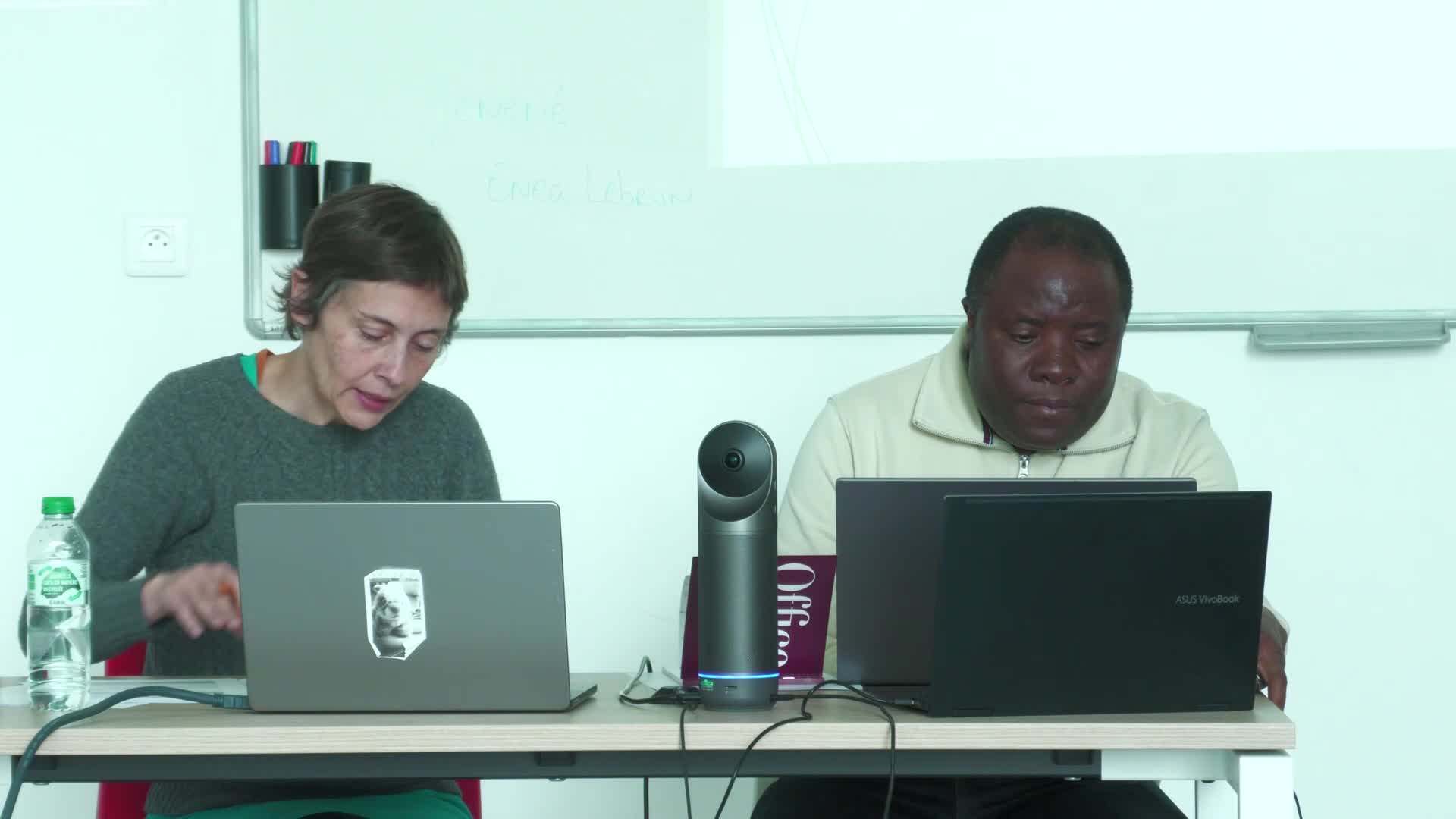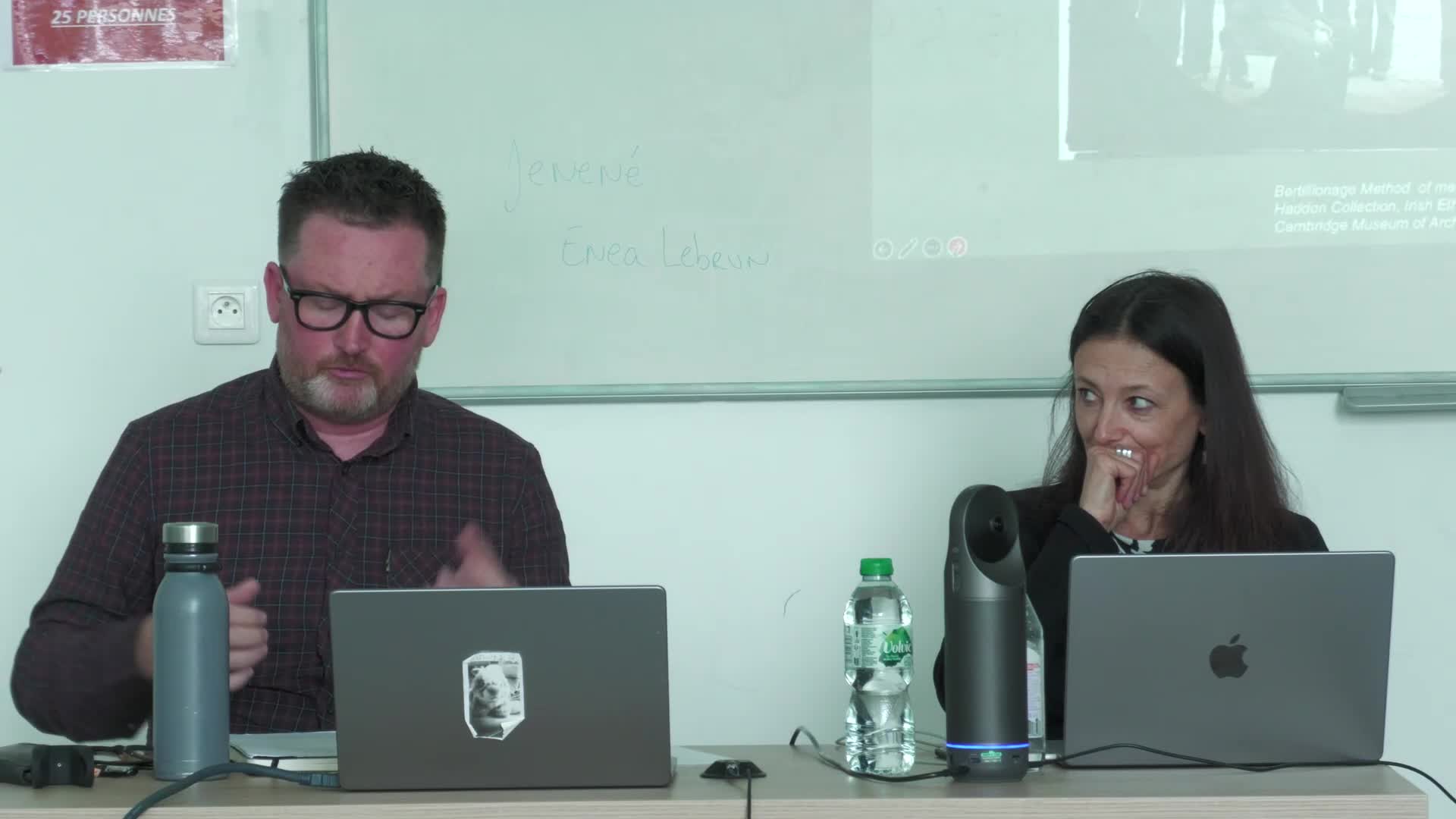Notice
Capturing by Photography the Social Relations at Work : Example from Researches in Ethiopia and Burkina Faso
- document 1 document 2 document 3
- niveau 1 niveau 2 niveau 3
Descriptif
My approach places the analysis of the interaction between researchers and interviewees at the centre of socio-visual practices, based on a study conducted in companies in Ethiopia and, more recently, Burkina Faso.
I propose to analyse the interplay involved in taking photographs as a way of shedding light on the relation with work, as a complement to the traditional tools of ethnographic investigation I will focus on the ways in which race, gender and class relations impact on this interaction. The presentation will first present the different everyday uses of photography in Burkina Faso and Ethiopia in order to explain the difficulties of setting up a visual survey in a company in Burkina Faso. In addition, the organisational framework can exploit or neutralise the social relations involved in photographic interaction. The presentation then highlights how Ethiopian men tend to play to the camera. While being a female photographer may make it easier to photograph Ethiopian women workers, the presentation highlights the difficulty of not reproducing power relations by rendering invisible the work of those who often adopt a discreet stance in front of the camera. We also show how these relationships should be considered in the context of the biographical experience of the actors, with the photographic interaction replaying previous situations of domination, including in other photographic interactions experienced differently from one interviewee to another.
Dans la même collection
-
Introduction: Uncovering the History of Women from Photo Archives: the Examples of the Colonial Arc…
VezzadiniElenaCristofaroDomenicoIntroduction: Uncovering the History of Women from Photo Archives: the Examples of the Colonial Archives of Ghana and Sudan
-
Writing History - histories in the Age of Photography
SchneiderJürgWriting History - histories in the Age of Photography
-
Zooming In: Children as Guides and Informants in Merauke, West Papua (Colonial Netherlands New Guin…
ReichgeltMarleenPhotography as a source for social history
-
Photography and Agency: the German-Cameroonian Colonial History Through the Visual Sources
NkoudaValentinPhotography as a source for social history
Sur le même thème
-
Après Soi 16-18 Écrire pour ses enfants ou comment transmettre la réputation familiale (XVI-XVIIIe)…
DeprettoLaureCe projet interdisciplinaire qui s’inscrit dans l’axe « Transmission(s), transfert(s), réappropriation(s) » de la MSH Val de Loire entend faire dialoguer historiens et littéraires sur les écrits
-
Introduction: Uncovering the History of Women from Photo Archives: the Examples of the Colonial Arc…
VezzadiniElenaCristofaroDomenicoIntroduction: Uncovering the History of Women from Photo Archives: the Examples of the Colonial Archives of Ghana and Sudan
-
Zooming In: Children as Guides and Informants in Merauke, West Papua (Colonial Netherlands New Guin…
ReichgeltMarleenPhotography as a source for social history
-
Racializing Photography: Reflecting on the Constellations of Photography, History and Race
CarvilleJustinRacializing Photography: Reflecting on the Constellations of Photography, History and Race
-
Photography and Agency: the German-Cameroonian Colonial History Through the Visual Sources
NkoudaValentinPhotography as a source for social history
-
Writing History - histories in the Age of Photography
SchneiderJürgWriting History - histories in the Age of Photography
-
Conquête spatiale et arts visuels : faire corps à corps avec le réel grâce au récit spéculatif
SophieDevauxSophie Devaux a saisi par l‘objectif les vestiges d’une aventure spatiale liée à la Guerre Froide comme un champ de ruines.
-
L’Albanie communiste vue à travers la production photographique
RapperGilles deDès 1945, le régime communiste qui se met en place en Albanie s’intéresse à la photographie en rassemblant et en diffusant les photos des combats mené par les résistants albanais contre les forces d
-
ENT'REVUES : « Objet papier et piqûres à cheval »
Onana ZoboAlysonBonnandDavidScouarnecAurélieEnt’revues vous invite à une soirée avec la revue Chiche. Conversations et lectures autour du numéro « Persona ».
-
Une architecture institutionnelle à l’épreuve des politiques de production de frontières : formati…
BourmaudPhilippePalestiniens et Israéliens deux décennies après Oslo : anatomie, vécus et mouvements d'une séparation Colloque du 17, 18 et 19 Février 2011, Maison méditerranéenne des sciences de l'homme, Aix-en
-
Un système au bord de la crise : les effets spatiaux de la désagrégation territoriale et la structu…
BourmaudPhilippeColloque international : 12, 13 et 14 novembre 2009, Maison méditerranéenne des sciences de l'homme, Aix-en-Provence Organisé par Stéphanie Latte Abdallah (IREMAM) et Cédric Parizot (CRFJ, IREMAM),
-
Le royaume de Naples et des Deux-Siciles (1815-1850)
DelpuPierre-MariePierre Marie DELPU évoque un "autre risorgimento" libéral, précurseur de l'Unité italienne, qui s'est forgé dans l'opposition aux Bourbons et dans l'émergence d'un sentiment national.












